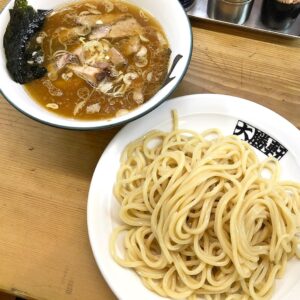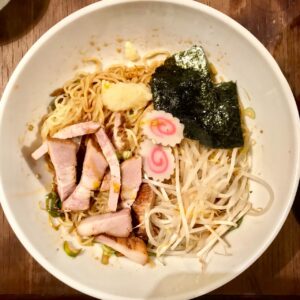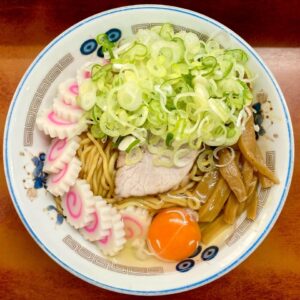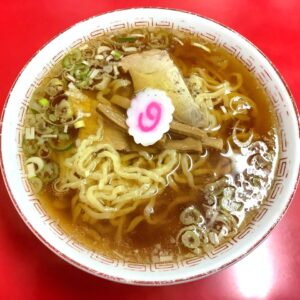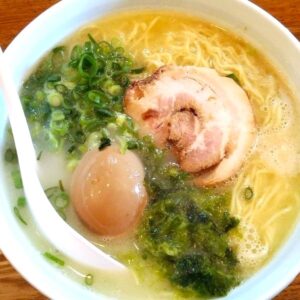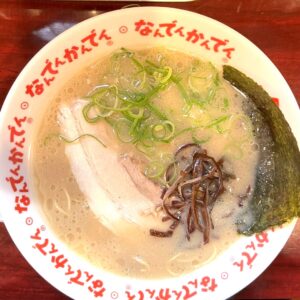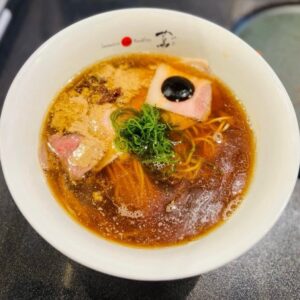Ramen and its History
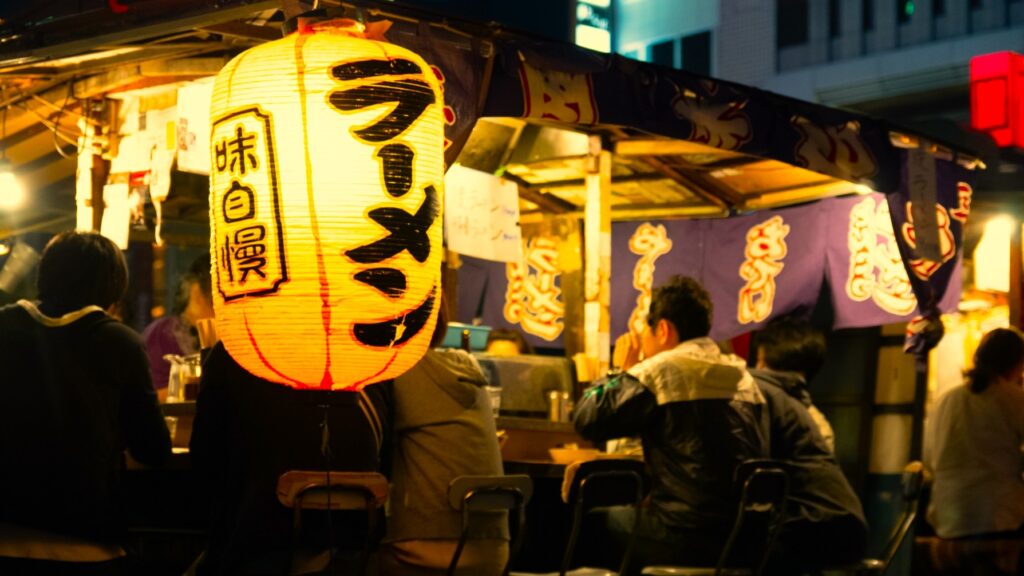
What is RAMEN?
It is a fusion cuisine of Japanese culture and Chinese noodle cuisine, which came to Japan when many foreigners moved to Yokohama, Kobe, Nagasaki, and Hakodate when the ports opened in 1959 (at the end of the Edo period). It evolved from Nanjing Soba(南京そば), a Chinese noodle that was served at Chinese restaurants and food stalls in the foreign settlement. It is also called Shina Soba(支那そば) or Chuuka Soba(中華そば ※Soba means “noodles”). It is written in kanji as 拉麺(la-men) or 老麺(laumen), and is generally written as ラーメン(ra-men), らーめん(ra-men), らあめん(raamen), らぁめん(raamen),らー麺(ra-men), etc.
There is no fixed recipe for ramen, and almost infinite variations can be created by combining the five elements: Men(麺) – noodles, Dashi(ダシ) – soup stock, Tare / Kaeshi (タレ / かえし) – sauce, Koumiyu(香味油) – flavored oil, and Guzai/Topping(具材 / トッピング) – ingredients.
The noodles are made by mixing an aqueous alkaline salt solution called カンスイ(kansui)(かん水、碱水、鹼水) with the flour to make them soft and elastic.
1950s – Tsukemen (つけ麺) :dipping noodles was developed in Nakano, Tokyo, and Abura Soba (油そば) :mixed noodles, soupless noodles =Maze Soba まぜそば / Shirunashi Men(汁なし麺) / Aemen(和え麺) were developed in western Tokyo, and the number of derivative ramen increased.
5 major elements that consist of ramen
①Dashi(ダシ) : …base soup stock or broth, such as pork bones, chicken bones, beef bones, seafood, dried sardines, vegetable potage, kelp, dried shiitake mushrooms, etc.
②Tare / Kaeshi (タレ / かえし): …Sauce, mixture of basic seasonings such as salt, soy sauce, and miso with paste or powder of meat, vegetables, seafood, and other ingredients.
③Men(麺・めん): Noodles…main character of ramen, such as thin noodles, medium-thick noodles, flat noodles, extra-thick noodles, medium-thin straight noodles, extra-thick curly noodles, etc.
④Koumiyu(香味油):Flavored oil (fat/oil)…the function that gives direction of flavor, such as Chicken oil, pork back fat, green onion oil, ma-yu oil (burnt garlic), chili oil, truffle oil, shrimp oil, etc.
⑤Guzai/Topping(具材 / トッピング):Ingredient …ramen toppings such as Charshu, boiled egg, vegetables, menma(seasoned bamboo shoot), Nori seaweed, Naruto fish Paste rolls, etc.
Overview of Japanese Ramen
Early records of RAMEN
1488: During the Muromachi period, Japan’s first Chinese noodles, “Keitaimen,” are eaten in Kyoto. The recipe is almost the same as modern ramen noodles.
1665: It is said the first Japanese to taste what was then called “Chinese noodles” was Mito Mitsukuni (Mito Komon, Tokugawa Mitsukuni, grandson of General Tokugawa Ieyasu) in 1665 (Kanbun 5).
At this time, ramen did not spread among the common people.

The dawn of RAMEN
1872: Chinese towns were created in various port towns opened to the world by the Meiji Restoration, and a Chinese restaurant opened in Nanjing-gai (南京街 ; now Yokohama Chinatown), one of the Chinese towns. There is a theory that the first ramen in Japan was served here.
1884: Yowaken(養和軒) in Hakodate, Hokaido becomes the first ramen restaurant in Japan to offer a menu called “Nankin Soba(南京そば).”
Around 1900, in the late Meiji period, ramen shops in Nankingai (currently Yokohama Chinatown) began to appear at food stalls in Tokyo under the name “Shina Soba(支那そば)” (or “Nankin Soba(南京そば)” or “Chuka Soba(中華そば)”). .
1923: Many ramen shops in Tokyo and Yokohama were affected by the Great Kanto Earthquake, and after that, yatai (food stalls), which were easy to start, spread throughout the country.
From the 1920s to the 1930s, ramen shops opened one after another in various places such as Sapporo, Kitakata, Kyushu, and Osaka.
Three major types of ramen: Tokyo ramen, Sapporo ramen, and Kyushu ramen
Tokyo ramen
1910: Rairaiken(来々軒) in Asakusa, Tokyo became very popular by serving Chinese soba noodles that were straight out of Yokohama’s Chinatown. (The prototype of Tokyo ramen)
Sapporo ramen
Takeya Shokudo(竹家食堂) opened in 1923 in front of Sapporo Agricultural University (currently Hokkaido University). The ”ra mien(拉麺)” served by this restaurant for Chinese students studying at an agricultural university is said to be the origin of today’s Sapporo ramen, and there is also a theory that “ra mien” is the origin of the word “ramen.” .
Kyushu ramen
Its origins date back to 1937 when it opened at the food stall “Nankin Senryo(南京千両)” in Kurume, southern Fukuoka Prefecture. This shop is still in business (2023).
1930 – The 1930s, just before World War II, during the Meiji era, when the original ramen shop was born.
The taste was improved by Japanese people to suit the Japanese taste, and the prototype of today’s ramen was formed.
-
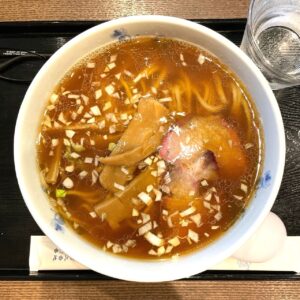
淺草 來々軒 (新横浜)Asakusa Rairaiken (reprint store inside Shin-Yokohama Ramen Museum)
-
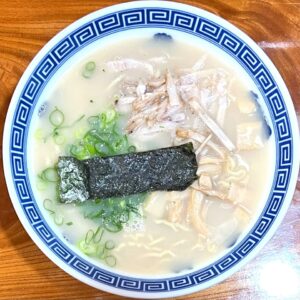
南京千両 (福岡県久留米市)Original Tonkotsu Ramen Nanking Senryo (Kurume-shi,Fukuoka Pref.)
Ramen establishment period
1945: After World War II, it spread from black market stalls across the country to become a national dish. Ramen with local flavors, such as tonkotsu and miso ramen, are gradually appearing in each region.
1947: cloudy tonkotsu ramen was developed by chance at stall Sankyu(三九) in Kurume City, Fukuoka Prefecture. This is the root of today’s cloudy pork bone ramen.
1954: miso ramen was developed at Aji no Sanpei(味の三平」) in Sapporo, Hokkaido, and became the roots of the current Sapporo miso ramen.
1955: Tsukemen;dipping noodles was developed at Taishoken(大勝軒) in Nakano, Tokyo, and became popular in Ikebukuro, Tokyo.
1955: Sanko in(三幸) Kunitachi City, Tokyo, and Chinchin-tei(珍々亭) in Musashino City, Tokyo began offering abura soba (soupless noodles, mazesoba).
Ramen development period
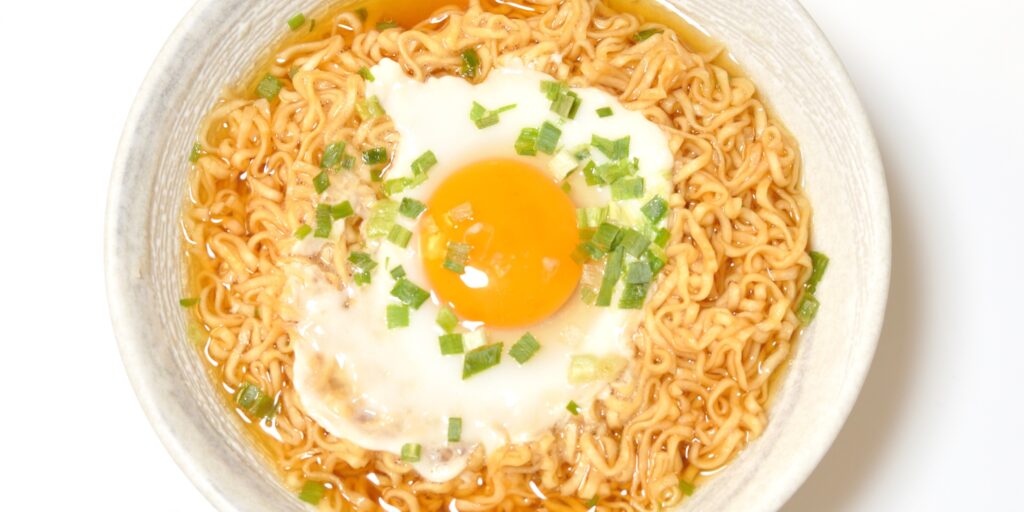
1958: the world’s first instant ramen “Nissin Chicken Ramen” was invented in Ikeda City, Osaka, and the name “ramen” became established.
1971: he invented the world’s first cup noodle, “Cup Noodles” (Nissin Foods Founder Momofuku Ando)
From the 1970s, Taiwan ramen is developed and served by Misen(味仙) in Nagoya.
1974: Yoshimuraya, the originator of Iekei ramen, opens in Shin-Sugita, Yokohama.
1975: Back fat cha-cha-style ramen, originating from Hope Ken (Sendagaya), became popular mainly in Tokyo.
1987: Hakata’s “Nanden Kanden” expanded into the Kanto region, sparking a nationwide boom in rich-tasting tonkotsu.
-

Taiwanese ramen “Misen” originated in Nagoya – Chinese Taiwanese cuisine Misen(味仙) Imaike main store
-
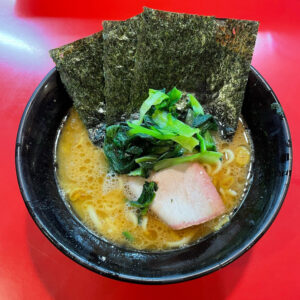
The originator of Iekei ramen with pork bone soy sauce – Iekei Sohonzan Ramen Yoshimuraya(吉村家)
-
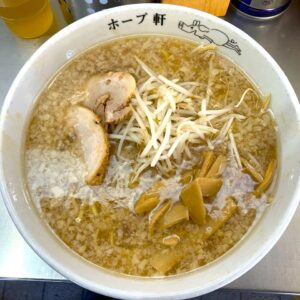
The origin of back fat cha-cha style ramen – Hope Ken (ホープ軒) Sendagaya main store
Diversification period
1990: In the 1990s, a variety of ramen shops began to appear, so many that they could be called “genre-less”.
1998: Local ramen boom begins. “Asahikawa Ramen”, “Wakayama Ramen”, “Tokushima Ramen”, etc.
2000: the “local ramen boom” began, where attention shifted from “local ramen” that focused on the region to “local ramen” that focused on the people who made it.
From 2000, genres have diversified to include light noodles, tsukemen, and mixed noodles without soup. A type of business called “ramen dining” where you can eat in a relaxed manner with a spacious floor (like family restaurant) has also appeared mainly in the Kanto area.
2005: Chicken paitan ramen becomes popular.
2007: Soupless Ramen (油そば、まぜそば mixed ramen / dressed noodles) becomes popular.
2008: Rich seafood tsukemen becomes popular. Taiwanese mazesoba was born from the Nagoya noodle shop Hanabi Takahata main store.
2009: Mud-based ramen becomes a boom.
2010: Tanrei-style ramen becomes a boom.
2013: Japanese cuisine is recognized as a UNESCO Intangible Cultural Heritage. Ramen is becoming generally recognized as a Japanese cuisine.
2016: Japanese Soba Noodles Tsuta becomes the first ramen restaurant in Michelin history to receive a one-star rating.

